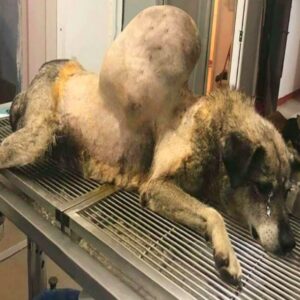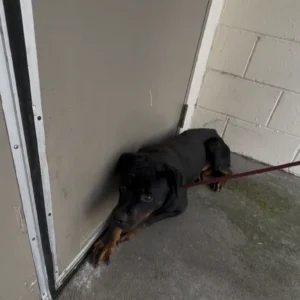Discovering a tumor on your beloved pet is every owner’s worst nightmare. While some growths are harmless, others can be life-threatening if ignored. By knowing the warning signs your dog has a tumor, you can act early, improve chances of survival, and possibly save your furry best friend’s life.

Early Warning Signs Your Dog Has a Tumor You Should Never Overlook
When Bunica, a terrified street dog abandoned on the roadside, was rescued with a tumor weighing nearly half her body, her heartbreaking story highlighted an important truth: many tumors grow silently until they become catastrophic threats. Here are key symptoms pet owners must watch out for.
1. Swollen or Growing Lumps
Sudden lumps that increase in size or change texture should be checked by a veterinarian immediately. Even if the mass doesn’t seem to hurt your dog, it could be cancerous and fast-spreading.
2. Unexplained Weight Changes
Unexpected weight loss, even with a normal appetite, can signal that your dog’s body is fighting an internal tumor. Conversely, rapid swelling in one area (like legs or abdomen) could indicate fluid buildup connected to tumor growth.
3. Persistent Lethargy and Fatigue
Dogs that grow unusually tired or lose interest in walks, food, or playtime might be reacting to discomfort or pain caused by an internal mass. Trust your instincts when your pet’s energy levels feel “off.”
4. Bleeding or Discharge
Nosebleeds, bloody saliva, discharge from ears, or unexplained wounds that won’t heal are alarming red-flag symptoms. Tumors can affect nearby blood vessels and organs, causing dangerous bleeding.
5. Difficulty Eating or Breathing
Tumors located in the oral cavity, throat, or chest may interfere with chewing, swallowing, or breathing. Coughing, wheezing, or gagging should be considered urgent causes for veterinary attention.
6. Noticeable Changes in Behavior
Pain or pressure from tumors can cause anxiety, depression, irritability, or sudden aggression. If your once-happy pet suddenly becomes withdrawn or snappy, it may be reacting to internal pain.
7. Digestive and Bathroom Issues
Tumors in the stomach, intestines, or urinary tract show up as vomiting, diarrhea, constipation, or difficulty urinating. Chronic or recurring symptoms are not normal and shouldn’t be treated with home remedies.
What to Do If You Notice These Signs
Time can make all the difference. Schedule an immediate vet appointment and ask for imaging tests to confirm what’s happening under the surface. Whether benign or malignant, early removal dramatically increases recovery chances and quality of life—just like Bunica, whose life turned around thanks to one brave rescuer who didn’t give up.
Conclusion
Our dogs can’t speak, but their bodies tell powerful stories. Recognizing warning signs your dog has a tumor and acting early gives your loyal companion the best possible chance. Stay alert, stay informed, and don’t hesitate to fight for your pet’s life—they would do the same for you.






